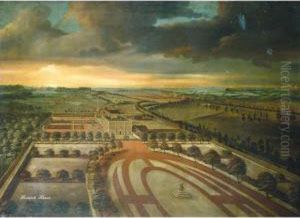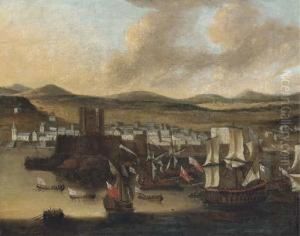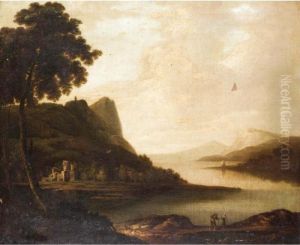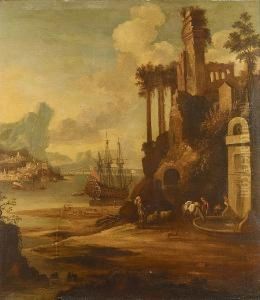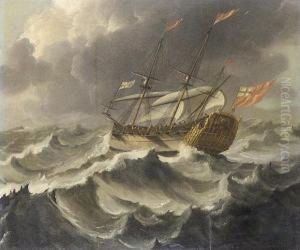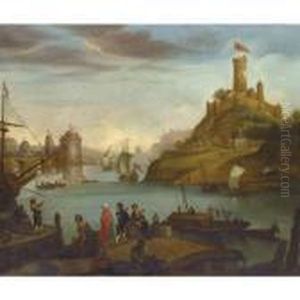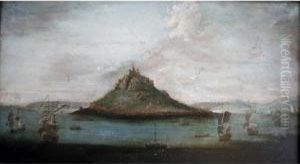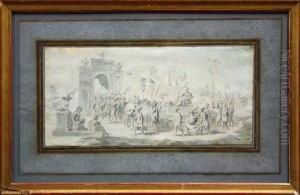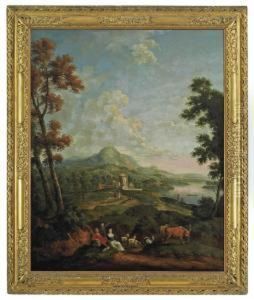William Van Der Hagen Paintings
William Van Der Hagen is considered the father of Irish landscape painting. Unfortunately, very little is known about his early life, including his birth year and place. It is believed he was Dutch or Flemish by origin and that he moved to Ireland in the early 18th century.
Van Der Hagen initially worked in Dublin and later traveled throughout Ireland, painting landscapes, country houses, and estates. His work is characterized by its detailed rendering of natural settings and architecture, which he often portrayed in a romanticized manner.
His clientele primarily consisted of the Irish aristocracy, who sought to have their estates and gardens depicted in the grand manner typical of the time. Van Der Hagen's paintings thus serve as valuable historical records of the Irish landscape and its social elite during the 18th century.
William Van Der Hagen's exact date of death is recorded as 1745. By the time of his death, he had established a tradition of landscape painting in Ireland that would be carried on by other artists. His influence was significant in the development of Irish art, and his works remain an important part of Ireland's cultural heritage.
